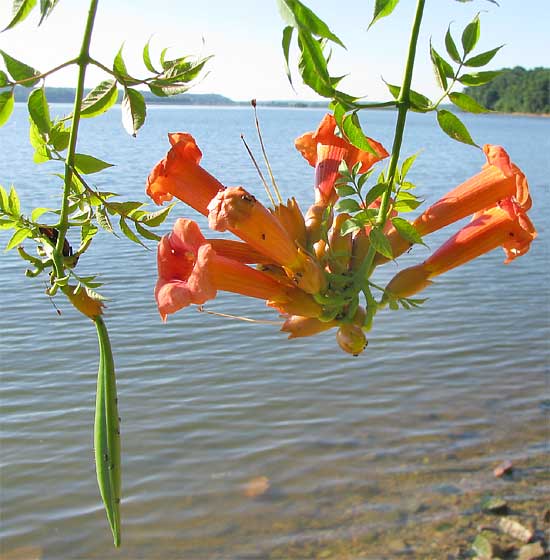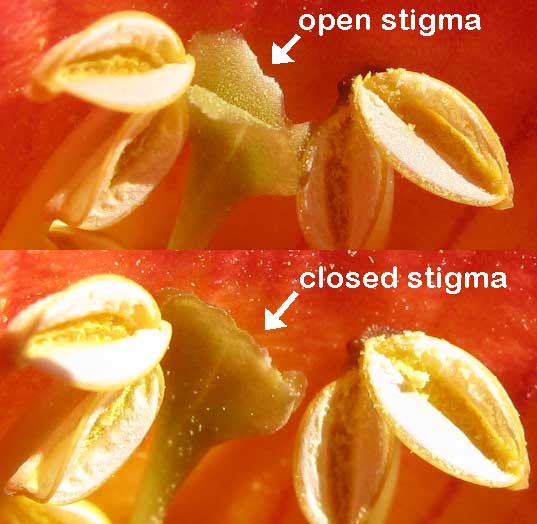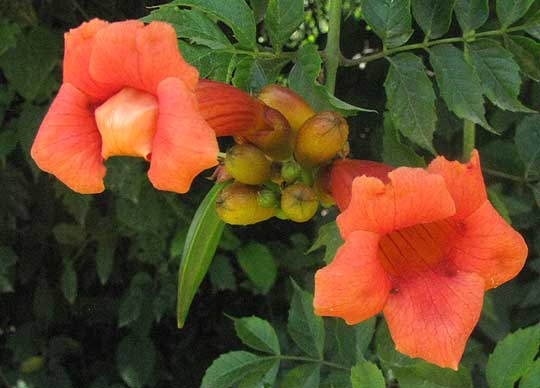Excerpts from Jim Conrad's
Naturalist Newsletter

from the the July 21, 2008 Newsletter, after a visit to Land Between the Lakes National Recreation Area in northwestern Tennessee:
THE TRUMPET CREEPER'S TOUCH-SENSITIVE STIGMA LOBES
Trumpet Creeper vines, CAMPSIS RADICANS were at their peak of flowering at Land Between the LakesI was able to photograph their touch-sensitive stigma lobes. That's a lakeside Trumpet Creeper above. Now look at close-ups of a flower's bi-lobed stigma (the female part atop the ovary's style, where male pollen lands and germinates) before and then ten seconds after I touched it, nestled among anthers, below:

Touch a stigma with its two flat lobes open, and you can actually see the lobes closing up.
It's been assumed that the Trumpet Creeper's touch- sensitive stigmas help plants cross-pollinate instead of self-pollinate. A 2004 study in China, however, found that both pollen from another plant as well as a flower's own pollen caused the stigmas to close permanently. The researchers could only conclude that the stigma-closing behavior probably helps pollination somehow.
from the June 24, 2012 Newsletter issued from the woods of the Loess Hill Region a few miles east of Natchez, Mississippi, USA
OPEN & CLOSED FLOWERS

In the above picture the flower at the right is open for business, but the one on the left has its lower corolla lobe bent upward closing off the blossom's interior.
I'm assuming that this is a mechanism for preventing pollinators from trying to pollinate a blossom whose sexual parts are too immature for fertilization to take place. The Trumpet Creeper "wants" the pollinator to invest its time and energy in visiting flowers where pollination transfer will do some good, not where pollen from another flower will serve no purpose.
Several times lately we've seen plants helping their pollinators decide which blossoms to visit. This is certainly one of the more spectacular examples.